
François Auguste René Rodin was a French sculptor generally considered the founder of modern sculpture. He was schooled traditionally and took a craftsman-like approach to his work. Rodin possessed a unique ability to model a complex, turbulent, and deeply pocketed surface in clay. He is known for such sculptures as The Thinker, Monument to Balzac, The Kiss, The Burghers of Calais, and The Gates of Hell.

The Burghers of Calais is a sculpture by Auguste Rodin in twelve original castings and numerous copies. It commemorates an event during the Hundred Years' War, when Calais, a French port on the English Channel, surrendered to the English after an eleven-month siege. The city commissioned Rodin to create the sculpture in 1884 and the work was completed in 1889.

The Musée Rodin of Paris, France, is an art museum that was opened in 1919, primarily dedicated to the works of the French sculptor Auguste Rodin. It has two sites: the Hôtel Biron and surrounding grounds in central Paris, as well as just outside Paris at Rodin's old home, the Villa des Brillants at Meudon, Hauts-de-Seine. The collection includes 6,600 sculptures, 8,000 drawings, 8,000 old photographs and 7,000 objets d'art. The museum receives 700,000 visitors annually.
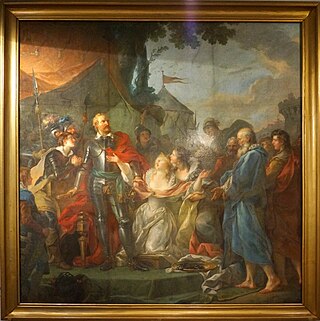
Eustache de Saint Pierre is the best-known figure of the group of six known as The Burghers of Calais, the first to volunteer and surrender, wearing "a shirt and a rope around his neck" to the King of England at that time, Edward III, to save the people of Calais.

The siege of Calais occurred at the conclusion of the Crécy campaign, when an English army under the command of King Edward III of England successfully besieged the French town of Calais during the Edwardian phase of the Hundred Years' War.

Walter Manny, 1st Baron Manny, KG, soldier of fortune and founder of the Charterhouse, was from Masny in Hainault, from whose counts he claimed descent. He was a patron and friend of Froissart, in whose chronicles his exploits have a conspicuous and probably an exaggerated place.
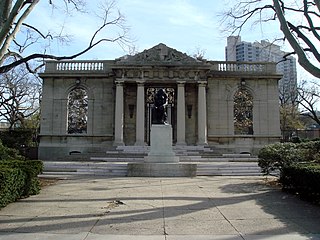
The Rodin Museum is an art museum located in Philadelphia, Pennsylvania that contains one of the largest collections of sculptor Auguste Rodin's works outside Paris. Opened in 1929, the museum is administered by the Philadelphia Museum of Art. The museum houses a collection of nearly 150 objects containing bronzes, marbles, and plasters by Rodin.

Wissant is a seaside commune in the Pas-de-Calais department in the Hauts-de-France region of France.

The Pale of Calais was a territory in northern France ruled by the monarchs of England from 1347 to 1558. The area, which was taken following the Battle of Crécy in 1346 and the subsequent siege of Calais, was confirmed at the Treaty of Brétigny in 1360. It became an important economic centre for England in Europe's textile trade centred in Flanders.
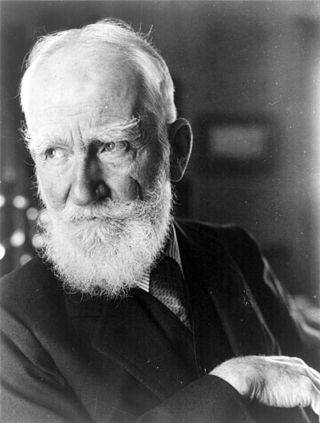
Village Wooing, A Comedietta for Two Voices is a play by George Bernard Shaw, written in 1933 and first performed in 1934. It has only two characters, hence the subtitle "a comedietta for two voices". The first scene takes place aboard a liner, and the second in a village shop. The characters are known only as "A" and "Z".

The Inca of Perusalem, An Almost Historical Comedietta (1915) is a comic one-act play written during World War I by George Bernard Shaw. The plot appears at first to be a fairy-tale like story about a fantastical "Inca", but it eventually becomes obvious that the Inca is Kaiser Wilhelm II of Germany.

Pierre de Wissant is a bronze sculpture by French artist Auguste Rodin, part of his sculptural group The Burghers of Calais. This sculpture represents one of the six burghers who, according to Jean Froissart surrendered themselves in 1347, at the beginning of the Hundred Years' War (1337–1453), in order to save the inhabitants of the French city of Calais from the English laying siege to the city.
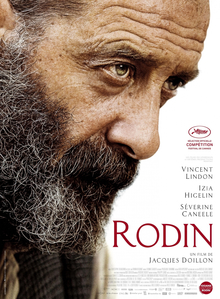
Rodin is a 2017 drama film directed by Jacques Doillon. It was selected to compete for the Palme d'Or in the main competition section at the 2017 Cannes Film Festival. The film received generally negative reviews from the major aggregator surveys.

Eustache de Saint Pierre is a sculpture by Auguste Rodin, now in the Museo Soumaya in Mexico City. It was conceived between 1885 and 1886 as part of his The Burghers of Calais group. The other figures in the group were also cast as individual figures.

Jean de Fiennes, in real life Jean de Vienne, is a sculpture by the French artist Auguste Rodin, first produced between 1885 and 1886. A bronze cast of it is now in the Museo Soumaya in Mexico City.
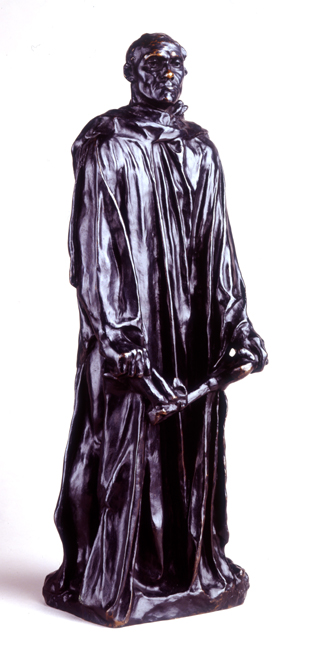
Jean d'Aire is a sculpture by the French artist Auguste Rodin, first conceived around 1885 as part of the planning for his group The Burghers of Calais.
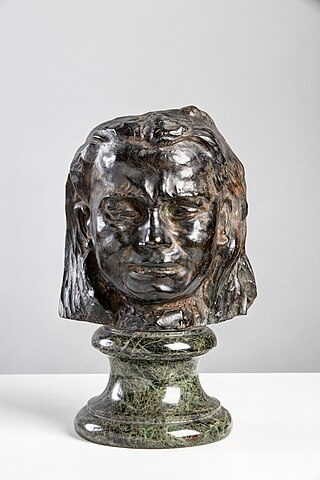
Mask of a Weeping Woman is a sculpture by Auguste Rodin, initially produced as a pair with Weeping Woman for the first version of his The Gates of Hell in 1885. The two pieces were intended to appear on the centre of each panel. They were later moved by Rodin himself, who instead placed Mask on the lower part of the left panel.

La Défense de Paris is a bronze statue by French sculptor Louis-Ernest Barrias. It commemorates the French dead from the Siege of Paris in 1870–71, during the Franco-Prussian War. The sculpture group was unveiled to the west of Paris on 12 October 1883, erected on an existing plinth that had previously supported a bronze sculpture of Napoleon by Charles Émile Seurre, alongside the crossroads between Courbevoie and Puteaux. The location became the La Défense roundabout, but the statue was later removed. The surrounding area was subsumed into Paris as the city expanded later in the 19th and in the 20th centuries; the area became known as La Défense after the statue. The statue was removed to a new location about 1965, and then moved several times before it was placed at its current location near the Arche de la Défense in 2017.

Calais City Hall is the seat of the city council in Calais, France. It has a 72-metre belfry of red brick and white limestone.
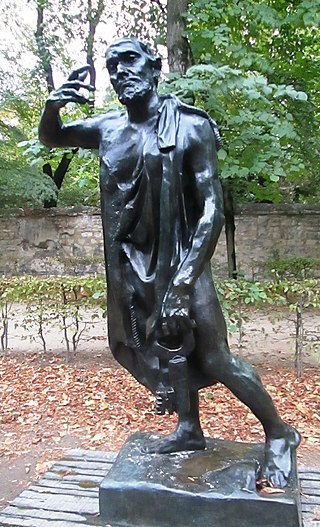
Jacques de Wissant was, together with his brother Pierre, one of the six burghers of Calais. Because of the name, it can be assumed that the brothers are from the village of the same name, Wissant, near Calais.



















